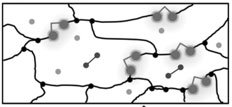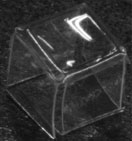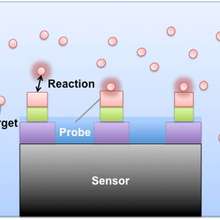The ancient Japanese art of origami is finding new relevance in modern technology.
In origami, a flat sheet of paper is converted into a 3D structure through a sequential series of folds. These techniques are being applied to solve current technological problems. They are used particularly for applications in which a flat structure must be folded up for transport and later unfolded for use.
For example, solar panels in spacecraft are carved with hinges that allow them to fold up into a small volume for launch, and then released for deployment. Another common example are surgical stents, which are collapsed into thin rods so they can travel through the blood stream, and then expanded once they have been properly positioned.
Researchers have recently demonstrated a method of using light to induce sheets of polymer gel to fold into complex shapes. Polymers are long, chain-like molecules that are composed of smaller molecules (called monomers) that are linked together. In a polymer gel, cross-links form between long molecules, forming a complex network (Figure 1).

In this experiment, researchers created a polymer gel with photo-reactive cross-links that break and re-form when exposed to light. The gel was molded into thin sheets and then stretched laterally to introduce strain into the polymer links.
Strain is a deformation in a material that results from an applied force; for example, when an arrow is pulled back
in on a bow, and the bow bends; the handle of the bow is under strain.
The strained gel was then illuminated with light at a certain wavelength, which initiated a chemical reaction that caused some of the cross-links to break and new ones to form. When the gel was released, it bent away from the source of the light, similar to how a bow returns to its original shape after an arrow has been fired.
The gel can be induced to fold itself into intricate shapes by carefully programming the time and pattern of light exposure. Researchers demonstrated this technique by creating a self-folding box and a heart (Figure 2).

The automation and mechanization of sequential folding patterns remains a challenge to engineers who seek large-scale manufacture of origami-inspired designs. The photo-origami technique is advantageous because with a single light-exposure “stamp”, a large number of identical folded structures can be created. In addition, because beams of light can be focused down to very small diameters, micro- and even nano-scale structures can be created using this technique.




